Fever with aching limbs
What is a fever with aching limbs?
If a fever occurs together with aching limbs, this often indicates an infection. This can be bacterial, viral or parasitic.
The symptoms are an expression of the battle between the immune system and the pathogen.
Limb or muscle pain occurs because the immune cells produce certain inflammatory mediators (e.g. prostaglandins) that activate the immune system. At the same time, these messenger substances also lower the pain threshold, which is why the patient has an increased pain sensation.
Fever is also a reaction of the immune system to speed up certain defense processes. There are also pathogens that are less able to multiply at high temperatures. Fever is therefore a sensible reaction of the body that does not necessarily require the use of antipyretic agents.

Causes of fever with aching limbs
As mentioned above, the coexistence of a fever and aching limbs is usually a sign of infection. This can be caused by bacteria, viruses or parasites.
The most common triggers are probably the viruses that cause a cold or the classic flu. They are usually transmitted by droplet infection (e.g. sneezing) and therefore spread quickly when people are together in a narrow space, for example on a full tram. With real flu, the fever is usually much higher than with a common cold.
Bacterial pathogens are also conceivable. In contrast to viruses, which are usually only treated symptomatically (the symptoms are alleviated, but the cause is not eliminated), bacteria can be killed with antibiotics. However, a bacterial infection - just like a viral one - can also heal on its own. The use of antibiotics should therefore be carefully considered by the attending physician.
Read more about the Side effects of antibiotics.
Parasites are rarely the cause of infections in our latitudes, but should not be ignored. Patients who complain of a fever with aching limbs and who have recently been abroad or who have contact with people who have been abroad are of particular interest. For example, malaria can cause flu-like symptoms including fever and muscle pain.
Another possible cause can be rheumatic diseases. Read more about this in the next section.
What other than a cold can be the cause?
A cold is caused by viruses. As mentioned above, fever and body aches can also be caused by bacteria or parasites.
Another possible cause of fever and body aches can be rheumatic diseases. This cause is rather rare compared to a cold, but should be considered if the symptoms persist (longer than 3 weeks). Rheumatic diseases express themselves at the beginning using unspecific general symptoms. These can be:
- Exhaustion
- sometimes fever
- night sweats
- Muscle aches
Rheumatism can be better differentiated from the other possible causes as soon as the typical joint complaints set in. These are usually worse in the morning and get better during the day (morning stiffness). At the beginning they usually occur on one side in the metacarpal bones.
Learn more about how to recognize rheumatism.
If only one of the two symptoms occurs, i.e. only fever or only aching limbs, completely different possibilities arise.
Allergy as a cause
An allergy can often not be identified as such straight away. The symptoms are very similar to those of a cold. Although there is usually no fever or pain in the limbs with an allergy, for example:
- Runny nose and sneezing
- to cough
- Exhaustion
Migraines as the cause
Migraines are attacks of headache. Symptoms do not include a fever or aching limbs. Otherwise, the symptoms bear little resemblance to an infection, apart from the exhaustion. Typical symptoms of migraines are:
- Unilateral or bilateral headache
- Nausea and vomiting
- Difficulty concentrating
- Visual disturbances
Diagnosis of fever with aching limbs
The diagnosis of the cause of fever and body aches can often be made on the basis of the anamnesis, i.e. in conversation with the patient.
Distinguishing between the flu and the common cold is not always easy. A cold often runs at temperatures lower than the flu or even without a fever at all. In addition, the flu often starts suddenly and violently, while the symptoms of a cold tend to appear one after the other. Otherwise the symptoms, such as fatigue, runny / blocked nose, headache, sore throat and cough are largely identical.
Get more detailed information about the Differences between cold and flu.
In terms of therapy, however, it is usually irrelevant to differentiate between a cold and the flu, as both are usually treated symptomatically (the cause itself is not combated). There are antiviral drugs against the flu virus, but these are only useful in the first 48 hours after the onset of symptoms.
It is more important to distinguish it from bacterial or parasitic pathogens. A bacterial infection may have to be treated with an antibiotic, depending on the severity, and there are also special medications for parasitic infections such as malaria.
Bacterial pathogens are much more persistent than viral ones. The classic cold symptoms such as cough, runny nose and hoarseness are intensified and in addition, sinus, tonsil and middle ear infections can develop. The mucus that forms in the nose and throat is often tough with bacterial pathogens and has a yellowish-green color. The duration of illness is also often longer here.
Parasitic pathogens also have certain unique selling points. In malaria, for example, the fever runs in typical waves or bursts.
A diagnosis should never be made without a physical examination. Here the doctor looks e.g. in the throat to detect redness or deposits and listen to the patient's lungs and heart (auscultation).
If the symptoms persist for more than three weeks, a blood sample should be taken and other diagnostic tests should be carried out, for example to rule out a rheumatological disease.
Concomitant symptoms
Depending on the cause of the fever and the pain in the limbs, different side effects can occur.
As mentioned above, rheumatic diseases are manifested by joint pain, which occurs mainly in the morning hours and at the beginning on one side in the metacarpal bones.
Infections, regardless of their origin, can have a number of accompanying symptoms. The pathogens preferentially attack the mucous membrane in the upper respiratory tract, but any other mucous membrane in the body can also be affected. If the pathogens settle in the gastrointestinal tract, symptoms such as diarrhea, vomiting and abdominal pain can occur.
The blood can also be attacked by pathogens, preferably bacteria, and lead to sepsis (blood poisoning). This life-threatening disease leads to impaired consciousness and in the worst case to multiple organ failure with death. It must therefore be dealt with urgently.
a headache
Headache can be a symptom of an infection. They are caused in the same way as body aches and pains. The immune cells release inflammatory mediators which fight the pathogens. At the same time, however, they also lower the pain threshold and increase the sensitivity to pain.
Learn more about Fever with headache.
fatigue
Fatigue can also appear as a symptom of infection and serves as a protective mechanism. The pathogen defense is exhausting for the body and demands everything from the immune system. During this time, the patient should therefore not engage in strenuous activities that would further weaken the body. Because of the tiredness, the patient does not feel able to do this either, but rather stays in bed - exactly right.
Gastrointestinal symptoms
Gastrointestinal symptoms can also be side effects of an infection. The pathogens preferentially attack the mucous membrane of the upper respiratory tract and cause coughing, runny nose and sore throat, but they can also attack any other mucous membrane in the body. E.g. an infection of the mucous membrane of the gastrointestinal tract leading to diarrhea, vomiting and gastritis (inflammation of the lining of the stomach). These symptoms are also best treated with home remedies, rest and adequate hydration.
Read which ones Home remedies for gastrointestinal symptoms help.
Treatment of fever and body aches
Treatment also depends on the cause.
A common cold is usually treated symptomatically. This means that the cause is not eliminated, only the symptoms are alleviated.
Sufficient rest and sleep is crucial for the healing process.
Drinking is also very important. On the one hand, the pathogens are flushed out and accompanying symptoms such as coughing are improved by the expectorant effect. On the other hand, the balance of the fluid balance is necessary, especially in the case of fever and associated sweating.
Medicines such as paracetamol or ibuprofen can help especially with fever and body aches. They have both pain-relieving and fever-lowering effects. As described above, however, fever is a sensible response and should therefore only be suppressed to a limited extent. If in doubt, discuss the intake with your family doctor.
Learn more about the Therapy for a cold.
In most cases, flu is also treated as described above. In addition, the use of antiviral drugs can be considered here. Nowadays, neuraminidase inhibitors are mainly used. These prevent the virus from being released from the host cell. However, these drugs only have an effect if they are taken within 48 hours of the onset of symptoms.
Get more information about the Treating the flu.
In the case of a bacterial pathogen, the use of antibiotics may be indicated. However, this should definitely be discussed with a doctor, as the frequent use of antibiotics kills the body's natural bacterial flora, which can lead to other dangerous pathogens. It can also lead to the development of resistance, so that certain antibiotics are no longer effective.
If parasitic pathogens are the cause of your body aches and fever, special medication must be taken to combat them.
If the suspicion of rheumatic disease is confirmed in the case of long-standing symptoms, a completely different treatment comes into play, including physiotherapy, physical or drug therapy.
Read more about the Treatment of a rheumatic disease.
Which home remedies help?
If the fever and pain in the limbs are due to an infection, the most important thing is to take it easy and get enough sleep.
Drinking enough is also important. Drinking warm teas is particularly suitable if you have a fever. The already weakened body does not have to spend any more energy on heating the drink to body temperature, as is the case with cold drinks. Herbal teas can also help lower the fever. Chamomile, sage, lime blossom and lilac are known for their sweat-inducing effects.
Another effective home remedy for both body ache and fever is calf compresses. The prerequisite for this are warm legs; these cooling compresses are contraindicated for cold legs! The wipes must not be too cold and should not lie on the skin for more than 10-15 minutes. If they warm up and the legs underneath are still warm, the wraps can be replaced.
Learn more about Calf wrap against fever.
Hot baths are also a therapy option for pain in the limbs alone. However, if the pain in the limbs occurs in combination with a fever, hot baths are strictly contraindicated! The fever can rise from the heat and can even be life-threatening.
Read our articles:
- Home remedies for a cold
- Home remedies for a fever
homeopathy
As already mentioned, fever is a sensible reaction of the body and should therefore not be combated directly with antipyretic agents. Despite this, the fever is very stressful for the body. Homeopathic remedies can gently support him in this.
Eupatiorium perfoliatum is particularly suitable for fever in combination with aching limbs. The patient feels bruised, suffers from shivering and is thirsty for cold food. It is recommended to take 2-3 D12 globules, 2-3 times a day.
If a fever occurs suddenly, belladonna and aconitum napellus can bring relief. The optimal dosage in both cases is 2-3 C30 globules dissolved in 200 ml of water, of which one sip every 15-20 minutes at the beginning. If you improve, you can increase the intervals or stop taking.
If the fever does not go down with homeopathic treatment and the pain in the limbs does not improve, you should consult a doctor.
Read our articles about this:
- Homeopathy for fever
- Homeopathy for a cold
When do I have to see a doctor?
Patients usually see the doctor in the first few days after the onset of symptoms because they need to be notified of illness. In principle, however, this cannot do much more for you - the magic word for a cold is patience.
If the symptoms show no improvement or even get worse for several days, however, a doctor should be consulted. This should check whether the pathogens are bacterial that may need an antibiotic.
If the symptoms persist for several weeks, a doctor should also be consulted to rule out rarer causes such as rheumatic disease.
There are certain groups of patients who should generally see a doctor. This includes
- Pregnant women,
- immunosuppressed patients or
- old people.
In these patients, an infection can take a worse course due to the weakened immune system. In rare cases, for example, the flu can even lead to death.
Get more information when you can consult a doctor with a fever should.
Duration of fever with aching limbs
The duration of the fever and limb pain varies depending on the cause and also shows individual differences. Determining factors are, for example, the age and constitution of the patient.
The classic flu usually lasts 9-14 days.
A common cold usually heals a little faster, but it can last up to 2 weeks. A good mnemonic here is the following: it comes 3 days, it stays 3 days, it leaves 3 days.
For flu and colds, the cough (if present) can last up to 6 weeks. This is based on bronchial hyperreactivity. After the virus is released, the cells of the airways die and then have to be regenerated. Until then, the cough can persist.
Read our articles about this:
- Duration of the flu
- Duration of a cold
Fever and body aches caused by rheumatic diseases can persist for a long time. As soon as these symptoms persist for several weeks, the cause should be investigated.
Special features in children
Fever is much more common in children than in adults. As a result of the daycare center, children are exposed to significantly more pathogens than adults. Usually, however, a fever is not a cause for concern.
A doctor should be consulted, though
- the fever continues to rise despite antipyretic drugs.
- the fever climbs to over 39 degrees and stays there.
- Accompanying symptoms such as earache, breathing difficulties, persistent cough, rattle or thick green nasal mucus occur.
A febrile seizure can occur as a possible complication of high fever. The child cramps, is not responsive and sinks into deep exhaustion after the attack. Such an attack should be avoided at all costs.
Another special feature is that children are contagious longer than adults.
Learn more about Fever in the toddler.







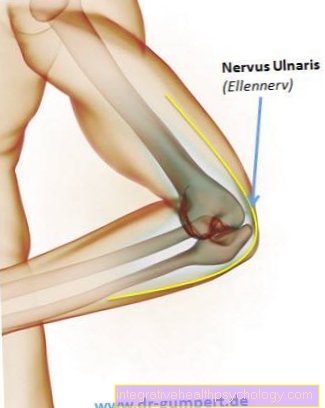



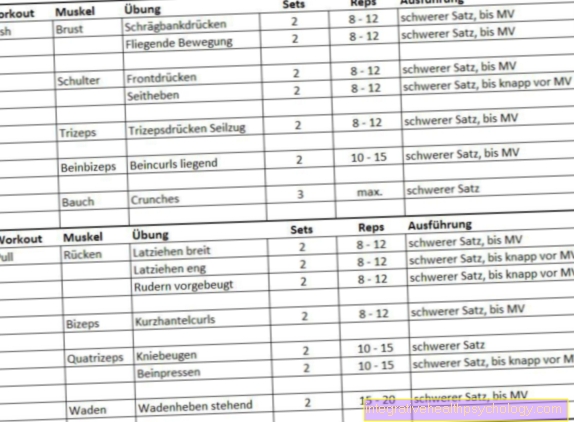






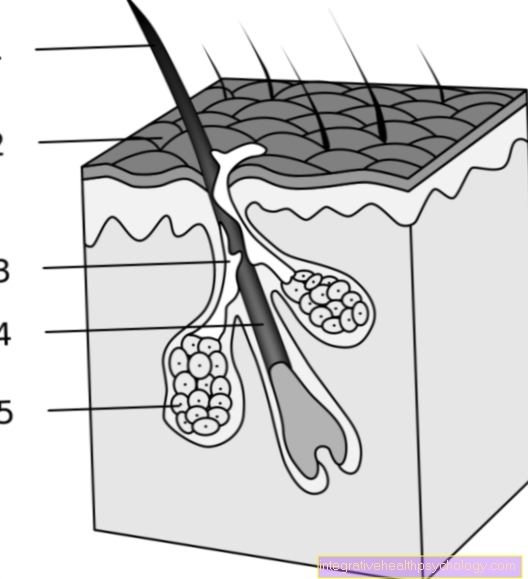

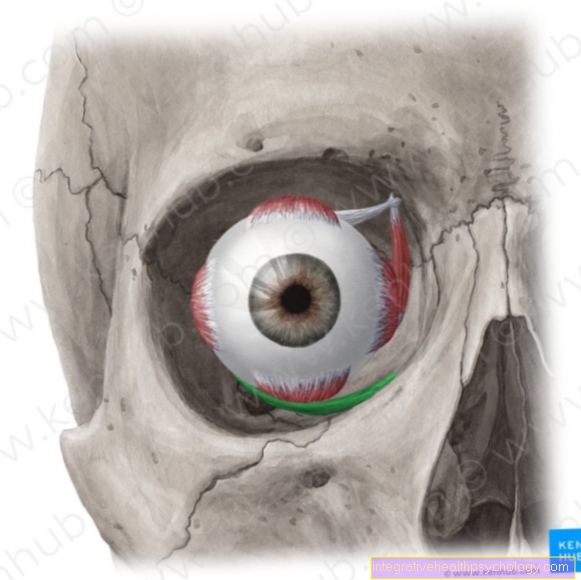




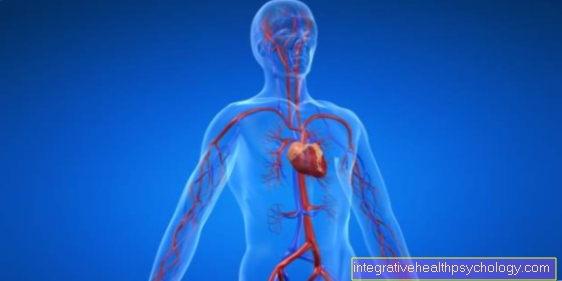

.jpg)

